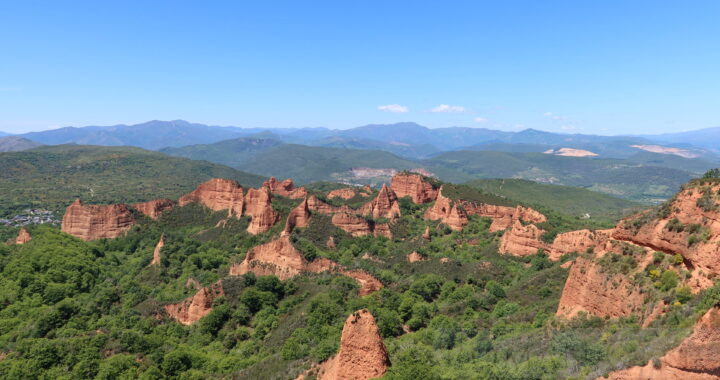- The remains of the Gold Mine are located in Ponferrada, near Leon, which was in the Province of Hispania Tarraconensis. It is a UNESCO World Heritage Site.
- Pliny the Elder (23-79 CE) stated that 20,000 Roman pounds or 6,560 kgs of Gold were extracted each year. It has been calculated that 5 million Roman pounds or 1,640,000 kgs were mined over 250 years.
Pliny the Elder on Roman Mining Techniques
- Pliny the Elder wrote about Mining Technique in his book ‘Natural History 33.21’ published in 74 CE.
- Pliny was a Procurator in Hispania Tarraconensis.
- His description of hydraulic mining may have been based on the practices he observed at Las Medulas, whilst in Hispania.
- Pliny stated 60,000 free workers operated the mine.
The Legion operating the Gold Mine
- Legio VI Victrix
- Legio VII Gemina Felix replaced the Legio VI Victrix in 74 CE.
- Army engineers were almost certainly used in the extraction of the minerals.
- The Bullion was then shipped down the Ebro to Tarragona, where a Unit of the Legio VII Gemina Felix was based.
- From Tarragona the Bullion was then sent across the Mediterranean to Rome.
‘Ruina Montium’ How the Roman Mining technique worked
- The technique was called ‘Ruina Montium’ (wrecking the Mountain).
- Shafts were driven down into the mountain, water was then filled into the shafts, the pressure weakening the rock which disintegrated.
- At least 7 aqueducts were constructed to collect water from nearby sources for the mining operation.
- Tanks and reservoirs were built near the vein to be exploited. They were fed by the Aqueducts. A huge volume of water, ‘Hushing’, was suddenly released, either sluicing away surface soil to reveal a vein, or removing the mineral vein from the surrounding rock in the shaft.
- Whole hillsides could be flushed away.
- The ores were then washed in small streams using riffle tables. These have vertical bars which vibrate against the current, causing the Gold nuggets to fall out and separate from the ore as it hits them.
- Burning was additional method used to loosen the rock by lighting a fire beside the rock and letting the heat crack it.
Total Gold production
- Pliny states that Las Medullas produced 20,000 Roman Pounds (6,560 kgs) of gold per annum for the Roman Imperial Treasury or 1,640,000 kgs in 250 years.
Roman Gold Mines
- Dacia: Compare this with the 500,000 kgs of gold produced in the Dacian Gold Mines in Roumania over the 165 years of occupation between 106-271 CE.
- Illyricum (27 BCE-79 CE): Pliny states the Province produced 50 Roman Pounds of gold per day or approximately 6,000 kgs per annum.
- Britannia: Dolaucothi Gold Mine in Britannia (figures unknown)
- Noricum (Austria): Karth Gold Mine (figures unknown)
Roman Mines
- Roman Mining in General.
Las Medulas Gold Mine, near Pontferrada, Spain

